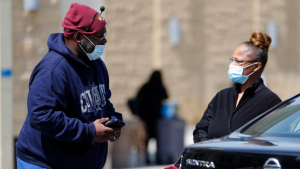In the 1950s and 60s the creation of the Civic Auditorium and I-10 freeway displaced hundreds of low-income families and now, City Council has decided, is time to make amends.
Through the newly approved “Right to Return” pilot program, up to 100 historically displaced households or households of direct descendants will be prioritized for City-funded affordable housing.
While eminent domain has been used to clear low-income and minority communities in the name of civic development across the nation, Santa Monica is one of the first cities to implement a priority housing program as a means of transitional justice.
“With this pilot, we strive to reach former residents or their descendants who were wrongly displaced from our community and to bring them back to Santa Monica through our affordable housing program,” said Mayor Sue Himmelrich. “If you or your family lost your home during this period, we urge you to apply for below market housing opportunities and to work with us as we look to craft a permanent program.”
The Right to Return pilot focuses on households located in the Belmar Triangle and Pico Corridor.
In the first half of the 20th century, the Belmar Triangle area was a thriving residential and business neighborhood composed mostly of Black families, many of whom had traveled north to escape segregation of the Jim Crow South. In the 1950s, the City purchased most of these households to construct the Civic Auditorium under a national program called Build America Better.
In the 1960s the I-10 highway was constructed straight through the Pico neighborhood, splicing the community in half and razing the homes of families living in the highway’s route. The use of eminent domain to construct this project displaced hundreds of low income families, including many Black and Latino households.
The pilot program clears the way to give up to 100 of these households second priority on Santa Monica’s highly sought after Below Market Housing list.
First priority remains with Santa Monica households who are displaced from their homes due to the Ellis Act, a natural disaster, owner occupancy, or government action. Households who either live in Santa Monica or work at least 25 hours a week in the city are now bumped to third priority.
It was a complex decision to decide where historically displaced households should fall on the BMH list. Prior to passing their recommendation on the pilot to City Council, the Housing Commission was split by a 4-3 vote with four members in support of the prioritization.
There was concern over whether the inclusion of this group high up on the priority list would result in the near exclusion of low-income households who work in Santa Monica, since there is a limited number of below market rate units available.
“I’m concerned that if the number of people who were displaced ends up being extremely large and all of them go ahead of people who are low income workers in our city, that also would be an injustice,” said Housing Commission Chair Michael Soloff, adding that he supports the idea behind the pilot and is glad it will be capped at 100 households.
Councilmember Kristin McCowan also spoke to the importance of housing local low-income families, saying many work in the tourism and hospitality sector — two economic engines of the city. However, she emphasized the overarching need to tackle historical wrongdoings.
“I too am really concerned about all the people who are living and working here that do not have access to affordable housing,” said McCowan. “But I think we have an obligation to do the work to right the wrongs of the past.”
McCowan, who is Black, added that this perspective comes from her family’s experience growing up in the area of the city where these eminent domain actions were taken.
“It is really uncomfortable to look at a list where addresses bump up against the edge of the house you grew up and still live in,” said McCowan.
“I’ve heard these stories since I was a child, because my dad grew up right there and watched it all get torn down. So personally, I’m very grateful.”
Since the pilot program is one of the first of its kind, City staff is unsure what demand will be like or what the best methods will prove to be for verifying people’s status as historically displaced.
During the pilot, staff will be testing and evaluating outreach strategies, the availability of historical documentation, and compliance with governing legislation to determine best practices for a broader and more permanent program in the future.
Those who were impacted or are the child or grandchild of someone impacted by the construction of the Civic Auditorium or the I-10 freeway, are encouraged to learn more by visiting https://www.santamonica.gov/housing-BMH.




